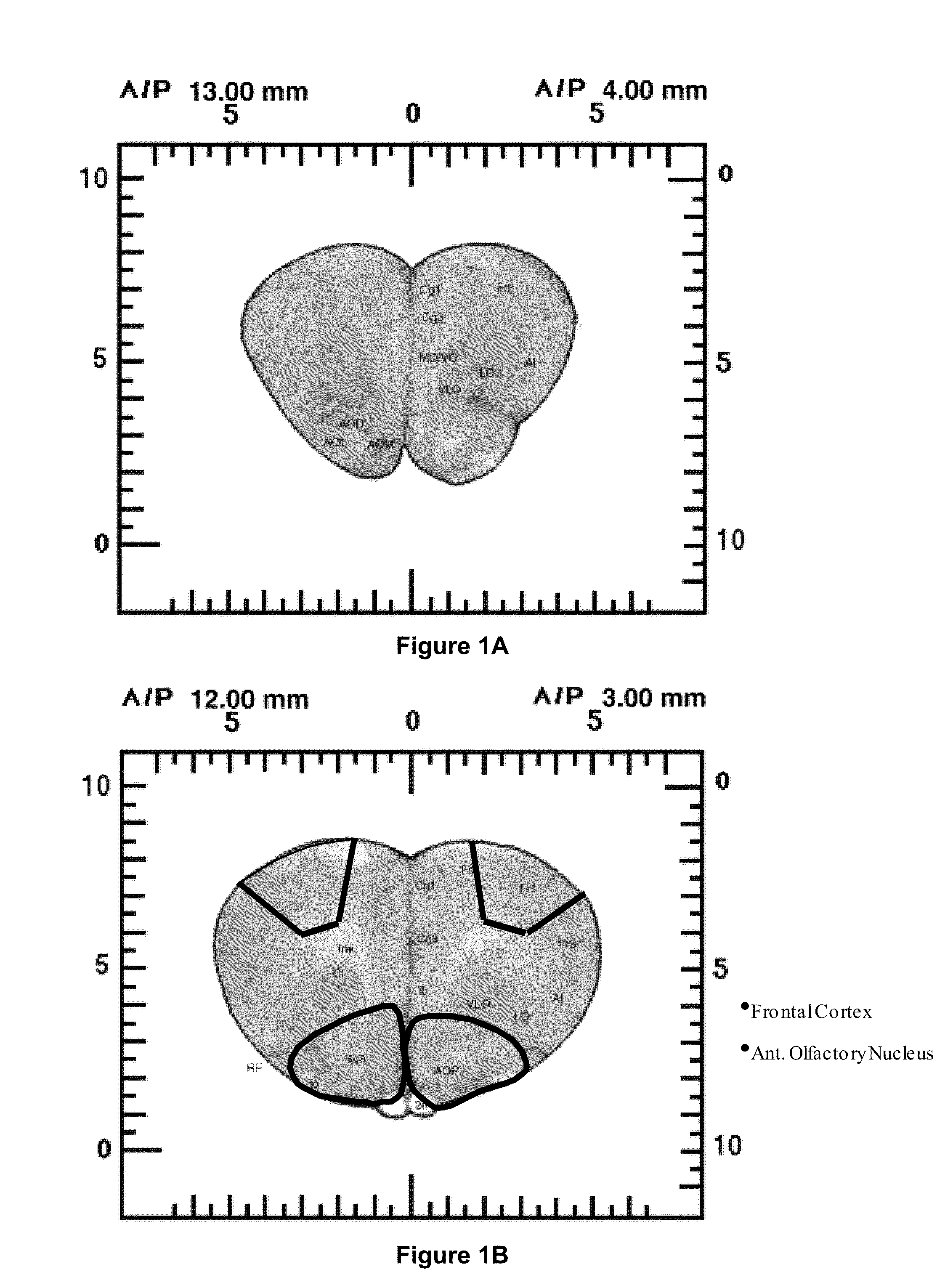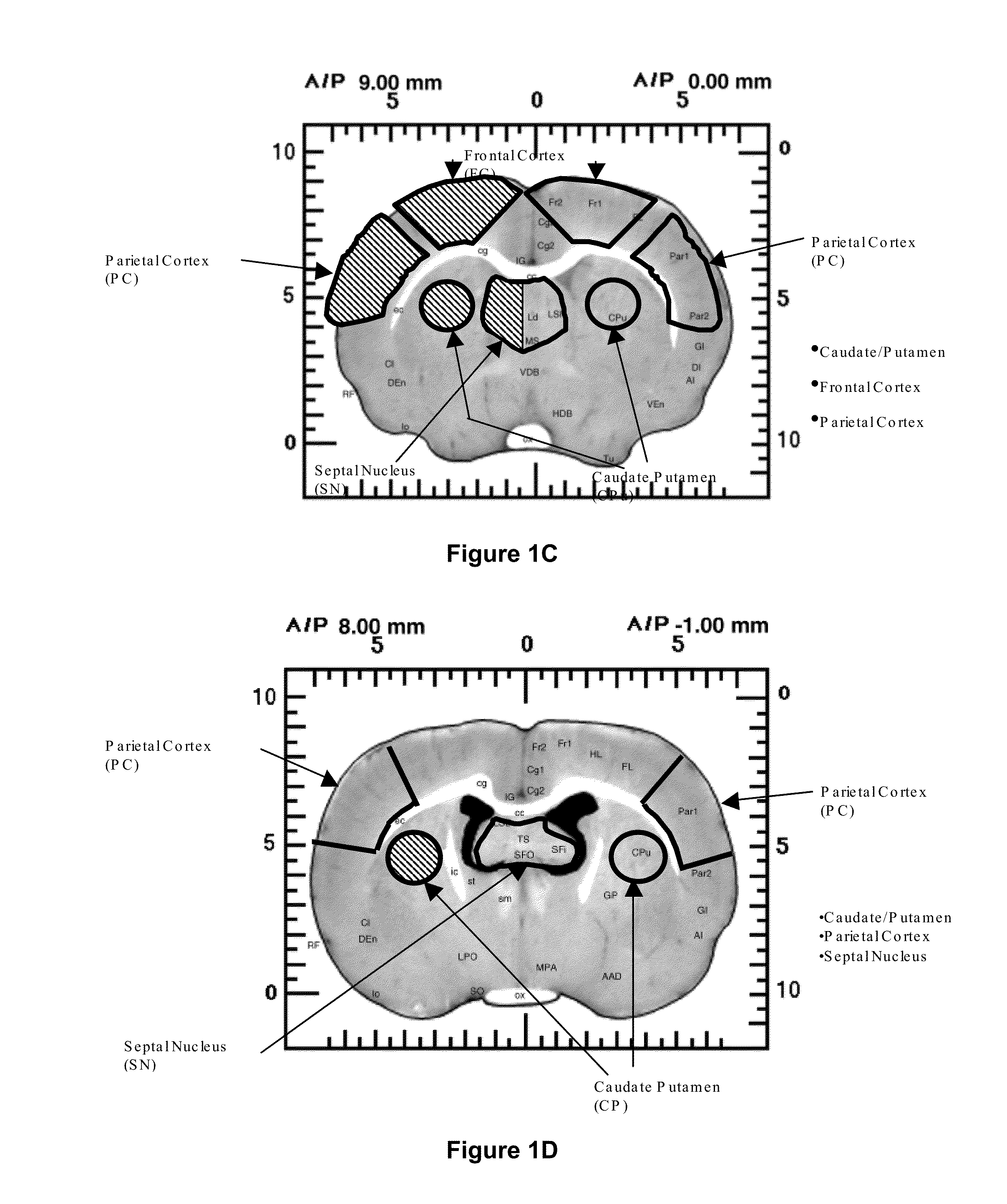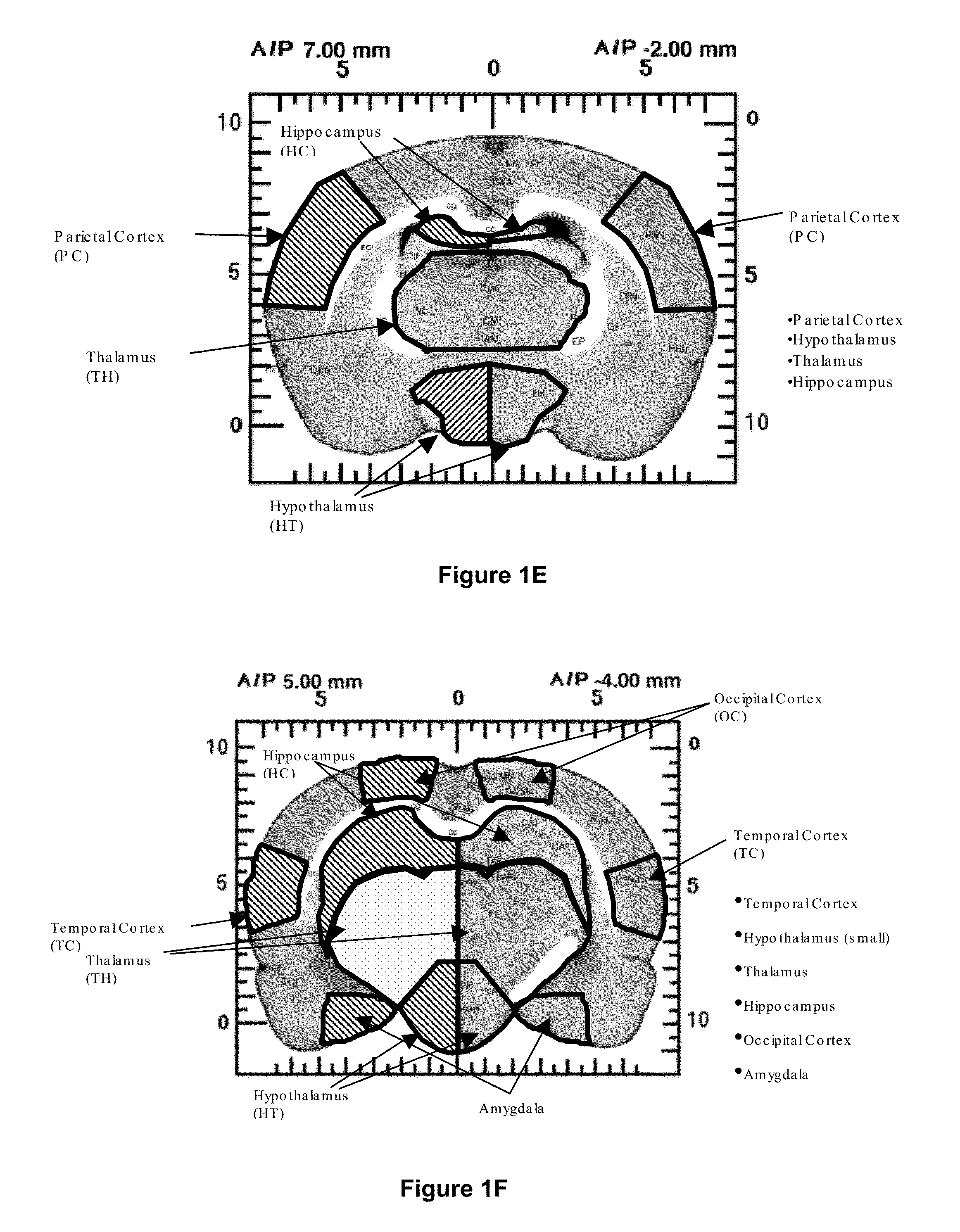Treatment of central nervous system disorders by intranasal administration of immunoglobulin g
- Summary
- Abstract
- Description
- Claims
- Application Information
AI Technical Summary
Benefits of technology
Problems solved by technology
Method used
Image
Examples
specific embodiments
[0289]In a first aspect, the disclosure provides a method for treating a central nervous system (CNS) disorder in a subject in need thereof, the method comprising: delivering a therapeutically effective amount of a composition comprising pooled human immunoglobulin G (IgG) to the brain of the subject, wherein delivering the composition to the brain comprises intranasally administering the composition directly to a nasal epithelium of the subject.
[0290]In one embodiment of the first aspect, at least 40% of the pooled human IgG administered to the subject contacts the nasal epithelium of the subject.
[0291]In one embodiment of the first aspect, at least 50% of the pooled human IgG administered to the subject contacts the nasal epithelium of the subject.
[0292]In one embodiment of the first aspect, at least 60% of the pooled human IgG administered to the subject contacts the nasal epithelium of the subject.
[0293]In one embodiment of the first aspect, the nasal epithelium is the olfactory...
example 1
Tolerability of Intranasal Administration of IgG in Rats
[0343]A study was conducted to examine the tolerability of intranasal administration of IgG in rats. The purpose of this study was to determine the tolerability of rats to intranasal IgG administration at various concentrations and preparations.
[0344]Experimental Design:
[0345]IgG was prepared as a liquid protein solution or as a microsphere preparation. The liquid IgG protein solution was prepared in glycine at 200 mg / mL and 100 mg / mL and had a pH of 5.1-5.3. The IgG microsphere preparation was prepared at 200 mg / mL and 150 mg / mL in PEG. The IgG preparations were administered to 8 anesthetized, adult male Sprague Dawley rats.
[0346]Prior to anesthesia, each rat was weighed. An anesthesia cocktail was prepared and full, half, and quarter anesthesia doses were calculated according to the animal's weight with a full dose containing 30 mg / kg ketamine, 6 mg / kg xylazine, and 1 mg / kg acepromazine. The anesthesia was administered subcut...
example 2
Comparison of Liquid, Microsphere, and Fragment Biodistribution at 30 and 90 Minutes
[0353]The purpose of this study was to quantify the amount of intranasally administered IgG that reaches the central nervous system and peripheral tissues in anesthetized rats. Specifically, the biodistribution of different formulations and modes of administration were compared. The different formulations and modes of administration are described in Table 4.
TABLE 4Formulations and modes of administration used in biodistribution study.125I radiolabeled IgGFormulationMode of AdministrationLiquid protein formulationIntranasal (biodistribution measured at 30min post administration)Liquid protein formulationIntravenous biodistribution measured at 30min post administration)Liquid protein formulationIntranasal (biodistribution measured at 90min post administration)Microsphere formulationIntranasal (biodistribution measured at 30min post administration)Microsphere formulationIntranasal (biodistribution measu...
PUM
| Property | Measurement | Unit |
|---|---|---|
| Weight | aaaaa | aaaaa |
| Weight | aaaaa | aaaaa |
| Fraction | aaaaa | aaaaa |
Abstract
Description
Claims
Application Information
 Login to View More
Login to View More - R&D
- Intellectual Property
- Life Sciences
- Materials
- Tech Scout
- Unparalleled Data Quality
- Higher Quality Content
- 60% Fewer Hallucinations
Browse by: Latest US Patents, China's latest patents, Technical Efficacy Thesaurus, Application Domain, Technology Topic, Popular Technical Reports.
© 2025 PatSnap. All rights reserved.Legal|Privacy policy|Modern Slavery Act Transparency Statement|Sitemap|About US| Contact US: help@patsnap.com



